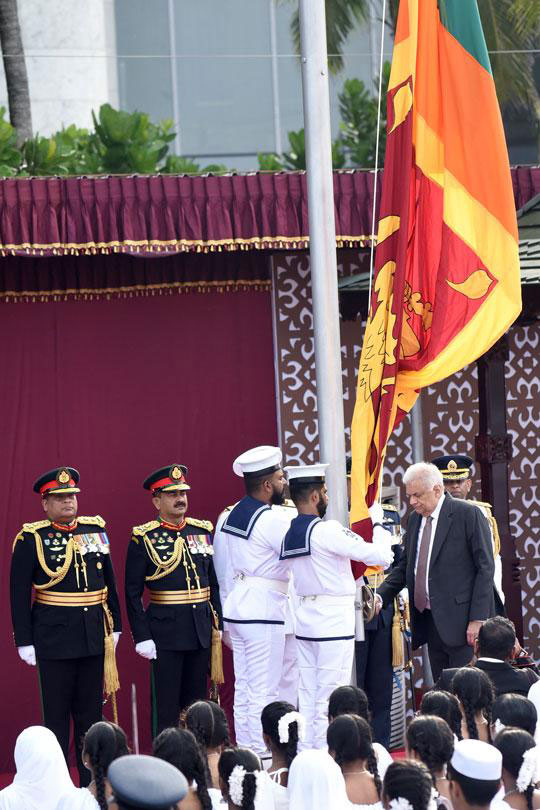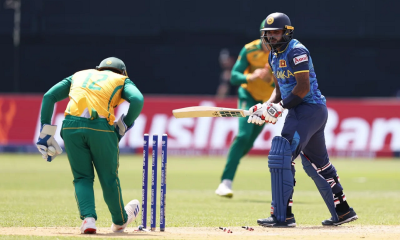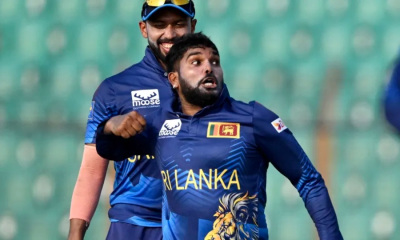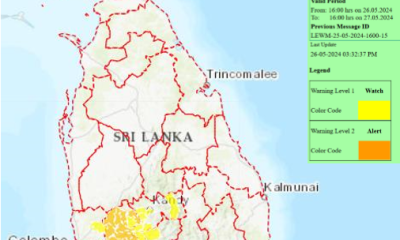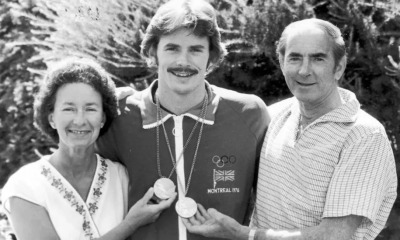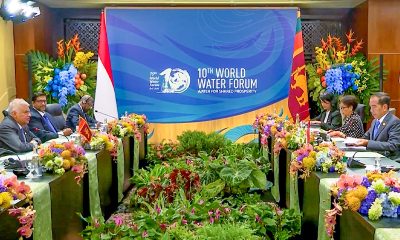Features
Sri Lanka: What is in store for us?

by Tissa Jayatilaka
To consider what the future holds for Sri Lanka, a glance at its past and present should prove useful as we could thereby contextualise and perhaps begin to understand what that likely future could be. Unless we look at our past mistakes dispassionately, attempt to learn from them and take meaningful steps to re-chart our national course, we are most likely to continue to allow history to repeat itself.
While it is doubtless true that Sri Lanka, like all other colonized countries, suffered immensely at the hands of those who colonized us, our track record of how our country (or constituent parts of it) has been ruled and governed by some of our own kings and nearly all of our politicians leave much to be desired. Heaping all of the blame for our continuing miseries post- 1948, therefore, on our colonizers and colonial rulers who exploited and plundered us (sometimes with a little help from our ‘nobility’) from 1505-1948, as some tend to do, is to obscure the truth.
We ourselves have contributed lavishly to our own ruin as evidenced by our pre-colonial and post – independence history. That history tells us that, as in some other countries of the world, violence and intrigue have been very much a way of life in Sri Lanka both in centuries gone by and post-independence. Why we as a nation have not overcome these tendencies, is something we need to ponder on, if we are to move beyond such uncivilized conduct.
At the turn of the 20th century, Sri Lankans began to divide along ethnic lines. The brand of Buddhist revivalism of Anagarika Dharmapala supported by Piyadasa Sirisena et al., influenced the circle of Sinhala businessmen who were implicated in the anti-Muslim riots of 1915. From around the 1920s the Sinhala – Tamil relations were on a slippery slope.
The fact that politically shrewd and manipulative British Governors of Ceylon sought to divide and rule us is beside the point; for after all, Ceylon had a sufficient number of educated, experienced and sophisticated political leaders at the time who should have known better than to fall for that colonial bait. The notable Ramanathan brothers who had hitherto spoken and acted in the best interests of the country in collaboration with their Sinhala colleagues, parted ways. They went back to Jaffna and together with a few of their Tamil contemporaries began to work for the betterment of their community.
A little more than a decade and a half later, S.W.R.D. Bandaranaike, who in 1926, upon his return from Oxford, had advocated a federal solution for the political ills arising from ethnic rivalry in the country, established the Sinhala Maha Sabha (1937) which was devoted to the promotion of Sinhala Buddhist interests. Bandaranaike had, like some other westernised Christian politicians, also become, what is referred to as, a Donoughmore Buddhist and donned the national dress. The above referred-to parting of the ways of the Sinhala and Tamil politicians, disturbed the harmony that had prevailed between them in the first two decades of the 20th century.
So we see, that the Sinhala and Tamil politicians were disunited even before we could secure independence from the British. What was infinitely worse was that the Sinhalese and Tamils were divided amongst themselves as well. The upper class and upper caste Sinhalese and their Tamil counterparts, believed that they, by birth and wealth, were superior to the rest of their country men and women.
Within three years after independence, the Sinhala and Tamil politicians split up. Certain members of the GG Ponnambalam-led Tamil Congress left in 1949 to form the Federal Party whilst S.W.R.D. Bandaranaike resigned from the United National Party -led government and formed the Sri Lanka Freedom Party in 1951.
Along with this ethnic division, was the social division based on class and caste. As Howard Wriggins (Wriggins:1960) has noted, Ceylon was made up of two nations, the Sinhala and the Tamil. There were also two other nations—those who spoke English and those who did not. The former was made up of both the public school elite and the western-educated elite. They held significant positions in the public service, the professions, business sector and politics.
The government was carried on in a language the non -English speaking public did not understand. The social divide between the English-educated elite of the urban areas and the rest of the country, especially those in the rural areas, was evident to any sensible observer. At the same time, those Ceylonese who were educated in the English medium, regardless of ethnic differences, bonded together in a way the rest did not.
Despite the above-delineated ethnic and social divisions, post-1948 Ceylon could have emerged as a viable nation united in its diversity. For that to happen, a strong political will was necessary. After nearly four centuries and a half of colonial rule, in the aftermath of independence, there was a need for a revival of indigenous socio-cultural values. And this was admittedly a complex need. However, it was our misfortune, that a majority of the political leaders who guided the destiny of Ceylon at the time, with the possible exception of D.S. Senanayake, had neither the will nor the wisdom required to attempt to bring about an all-embracing national revival and hence succeeded in achieving only a Sinhala Buddhist revival.
Consequently, less than a decade after independence, “1956” came into being on the back of an extreme Sinhala Buddhist nationalism and Ceylon lost whatever was left of the opportunity to forge a pluralist society. We became a country of different ethnicities and religions instead of a robust nation held together by unity in diversity. As the years rolled by thereafter, Sri Lanka became, as the American academic Robert Kearney has put it, an unhappy reminder of the difficulty of maintaining an orderly and peaceful democratic process in a plural society when ethnic loyalties and symbols become central elements of political contention and outcomes are determined on a majoritarian rather than a consociational basis. (Kearney:1985).
The grim and dismal outcome of our missed opportunity to become a rainbow nation, is our painful present predicament. Today we have hit rock-bottom economically and politically. To say that the Sri Lanka of today is in chaos is to state the obvious. Even faced with dire challenges to our very existence as a country, we continue to remain divided as ever, with each of our political outfits clamouring to ride into political power at whatever cost. Each political party has miraculous solutions to our national woes which they “threaten” to implement, as the Rajapakse cabal did whenever elected to office. A need to have a dialogue with the electorate on key issues, prior to an election is, strangely, not deemed important.
In the latter political context, it is useful to recall the damning indictment of our political reality by U.B. Wijekoon, a former prominent politician. In a booklet titled The Curse of Party Politics (no date, probably 2008), Wijekoon tells us that politicians from all backgrounds tend to look at any national problem with the sole intent of seeking an advantage to win elections, disregarding principles and values. Furthermore, he observes that our political party system has wrought havoc by misguiding our society, denying the country of a coherent social fabric and economic equity, and in the process creating grave national instability.
He notes that in Britain, whose political model we have chosen to follow, over a period of five centuries only three political parties came into being, whereas in Sri Lanka, political parties exceeding fifty-nine (59) have been registered within a short span of 60 years. Wijekoon goes onto say that our politicians are not accountable to the people who elect them, and that virtually all of them are guilty of bribery and corruption. With meagre incomes most politicians manage to send their children to international schools in the country and then to universities abroad. What Wijekoon told us in 2008 remains valid even today!
One of the most pressing needs of the day, if we are serious in our intent to resurrect Sri Lanka from the depths to which it has fallen, is to curb and minimize corruption. Corruption as defined by the Malaysian academic Syed Alatas, is the abuse of public trust for personal gain, and it is rife both among our politicians and, tragically, amongst members of our public service as well. Until we implement fully, sans political interference in the judicial process, the existing laws of the land and legislate necessary new laws to combat rampant corruption, it is unlikely that much will change in our country in the years ahead.
Another crucial need, however belatedly, is to make a genuine effort to forge national unity. So long as all of us are not treated as Sri Lankans, regardless of our ethnicity and religion, so long will we continue to flounder as a state nation instead of becoming a nation state. And until Sri Lanka stops discrimination of its citizens on the basis of language and religion, there will not be meaningful and consistent socio-economic development in our thrice-blessed land. Sri Lanka has to curb its militant Sinhala-Buddhist nationalism which, its politicians and a segment of its Buddhist clergy, (contrary to the teachings of the Buddha) are guilty of. Ever since the early 1950s, when the Eksath Bhikku Peramuna (EBP) came into being, Sri Lanka has been plagued by violence against the non-Sinhalese, orchestrated by unscrupulous politicians seeking to win elections by hook or by crook, with the aid of lesser mortals among the Buddhist clergy. This is unacceptable and totally contrary to the ethics and principles enshrined in the Buddha Dhamma.
None of the above can be achieved without a radical reform of our education system. The key element of such a reform should be the teaching of an inclusive History in our schools. The History we are presently taught, even before each of us can begin to distinguish right from wrong, tells us that our non-Sinhala fellow citizens are evil because the Tamil kings of old harmed the Sinhalese or because South Indian Tamils (the Pandyans and the Cholas) invaded us ages ago, between the 9th and 10th centuries; and that Islam poses a threat to Buddhism while Muslim traders and businessmen impoverish their Sinhala counterparts. Surely it is about time, we Sri Lankans shed our primordial prejudices, fears and complexes and learned to live in peace with one another.
In addition to the teaching of such an inclusive History, the future generations should be introduced to the tenets of all the major religions, taught the basics of ethical behaviour as a part of their school curriculum combined with the essence of literature and philosophy to create well-rounded future citizens. In this endeavour, early academic specialization should be discouraged, at least until after the GCE Ordinary Levels.
As Arjuna Hulugalle (The Island; 16 April, 2009) observed almost fifteen years ago, the introduction of tri-lingualism is a must. We have come a long way since Dr. Colvin R. de Silva said, One language two nations; two languages one nation. Important as the two languages Sinhala and Tamil are, they are insufficient today for our purposes. Hence, in addition to teaching both indigenous languages to all Sri Lankan students, they should be taught English because a knowledge-based society needs to have access to the world outside its shores.
Tri-lingualism for Sri Lanka is necessary because language will play an important role in the process of reconciling and uniting all our citizens. Countries like Switzerland, Finland, Canada and Singapore to name but a few, give equal importance to all the languages spoken within their borders.
Our education system should be reformed as outlined above so that Sri Lanka could aspire to inter-ethnic, inter-religious and inter-cultural harmony without which, only further misery will be in store for us in the years to come. These changes to our educational system, though essential, can only produce results after many years. Among the short to medium-term measures that could be adopted to address the anomalies in our system, the following could be considered essential and immediate:
· Merit-based selection for all public service appointments;
· The conferment of equal status to all national languages, religions and citizens;
· Gender equality; and,
· The strict application of the laws of the land to all citizens irrespective of their social and political status.
Features
The heart-friendly health minister

by Dr Gotabhya Ranasinghe
Senior Consultant Cardiologist
National Hospital Sri Lanka
When we sought a meeting with Hon Dr. Ramesh Pathirana, Minister of Health, he graciously cleared his busy schedule to accommodate us. Renowned for his attentive listening and deep understanding, Minister Pathirana is dedicated to advancing the health sector. His openness and transparency exemplify the qualities of an exemplary politician and minister.
Dr. Palitha Mahipala, the current Health Secretary, demonstrates both commendable enthusiasm and unwavering support. This combination of attributes makes him a highly compatible colleague for the esteemed Minister of Health.
Our discussion centered on a project that has been in the works for the past 30 years, one that no other minister had managed to advance.
Minister Pathirana, however, recognized the project’s significance and its potential to revolutionize care for heart patients.
The project involves the construction of a state-of-the-art facility at the premises of the National Hospital Colombo. The project’s location within the premises of the National Hospital underscores its importance and relevance to the healthcare infrastructure of the nation.
This facility will include a cardiology building and a tertiary care center, equipped with the latest technology to handle and treat all types of heart-related conditions and surgeries.
Securing funding was a major milestone for this initiative. Minister Pathirana successfully obtained approval for a $40 billion loan from the Asian Development Bank. With the funding in place, the foundation stone is scheduled to be laid in September this year, and construction will begin in January 2025.
This project guarantees a consistent and uninterrupted supply of stents and related medications for heart patients. As a result, patients will have timely access to essential medical supplies during their treatment and recovery. By securing these critical resources, the project aims to enhance patient outcomes, minimize treatment delays, and maintain the highest standards of cardiac care.
Upon its fruition, this monumental building will serve as a beacon of hope and healing, symbolizing the unwavering dedication to improving patient outcomes and fostering a healthier society.We anticipate a future marked by significant progress and positive outcomes in Sri Lanka’s cardiovascular treatment landscape within the foreseeable timeframe.
Features
A LOVING TRIBUTE TO JESUIT FR. ALOYSIUS PIERIS ON HIS 90th BIRTHDAY

by Fr. Emmanuel Fernando, OMI
Jesuit Fr. Aloysius Pieris (affectionately called Fr. Aloy) celebrated his 90th birthday on April 9, 2024 and I, as the editor of our Oblate Journal, THE MISSIONARY OBLATE had gone to press by that time. Immediately I decided to publish an article, appreciating the untiring selfless services he continues to offer for inter-Faith dialogue, the renewal of the Catholic Church, his concern for the poor and the suffering Sri Lankan masses and to me, the present writer.
It was in 1988, when I was appointed Director of the Oblate Scholastics at Ampitiya by the then Oblate Provincial Fr. Anselm Silva, that I came to know Fr. Aloy more closely. Knowing well his expertise in matters spiritual, theological, Indological and pastoral, and with the collaborative spirit of my companion-formators, our Oblate Scholastics were sent to Tulana, the Research and Encounter Centre, Kelaniya, of which he is the Founder-Director, for ‘exposure-programmes’ on matters spiritual, biblical, theological and pastoral. Some of these dimensions according to my view and that of my companion-formators, were not available at the National Seminary, Ampitiya.
Ever since that time, our Oblate formators/ accompaniers at the Oblate Scholasticate, Ampitiya , have continued to send our Oblate Scholastics to Tulana Centre for deepening their insights and convictions regarding matters needed to serve the people in today’s context. Fr. Aloy also had tried very enthusiastically with the Oblate team headed by Frs. Oswald Firth and Clement Waidyasekara to begin a Theologate, directed by the Religious Congregations in Sri Lanka, for the contextual formation/ accompaniment of their members. It should very well be a desired goal of the Leaders / Provincials of the Religious Congregations.
Besides being a formator/accompanier at the Oblate Scholasticate, I was entrusted also with the task of editing and publishing our Oblate journal, ‘The Missionary Oblate’. To maintain the quality of the journal I continue to depend on Fr. Aloy for his thought-provoking and stimulating articles on Biblical Spirituality, Biblical Theology and Ecclesiology. I am very grateful to him for his generous assistance. Of late, his writings on renewal of the Church, initiated by Pope St. John XX111 and continued by Pope Francis through the Synodal path, published in our Oblate journal, enable our readers to focus their attention also on the needed renewal in the Catholic Church in Sri Lanka. Fr. Aloy appreciated very much the Synodal path adopted by the Jesuit Pope Francis for the renewal of the Church, rooted very much on prayerful discernment. In my Religious and presbyteral life, Fr.Aloy continues to be my spiritual animator / guide and ongoing formator / acccompanier.
Fr. Aloysius Pieris, BA Hons (Lond), LPh (SHC, India), STL (PFT, Naples), PhD (SLU/VC), ThD (Tilburg), D.Ltt (KU), has been one of the eminent Asian theologians well recognized internationally and one who has lectured and held visiting chairs in many universities both in the West and in the East. Many members of Religious Congregations from Asian countries have benefited from his lectures and guidance in the East Asian Pastoral Institute (EAPI) in Manila, Philippines. He had been a Theologian consulted by the Federation of Asian Bishops’ Conferences for many years. During his professorship at the Gregorian University in Rome, he was called to be a member of a special group of advisers on other religions consulted by Pope Paul VI.
Fr. Aloy is the author of more than 30 books and well over 500 Research Papers. Some of his books and articles have been translated and published in several countries. Among those books, one can find the following: 1) The Genesis of an Asian Theology of Liberation (An Autobiographical Excursus on the Art of Theologising in Asia, 2) An Asian Theology of Liberation, 3) Providential Timeliness of Vatican 11 (a long-overdue halt to a scandalous millennium, 4) Give Vatican 11 a chance, 5) Leadership in the Church, 6) Relishing our faith in working for justice (Themes for study and discussion), 7) A Message meant mainly, not exclusively for Jesuits (Background information necessary for helping Francis renew the Church), 8) Lent in Lanka (Reflections and Resolutions, 9) Love meets wisdom (A Christian Experience of Buddhism, 10) Fire and Water 11) God’s Reign for God’s poor, 12) Our Unhiddden Agenda (How we Jesuits work, pray and form our men). He is also the Editor of two journals, Vagdevi, Journal of Religious Reflection and Dialogue, New Series.
Fr. Aloy has a BA in Pali and Sanskrit from the University of London and a Ph.D in Buddhist Philosophy from the University of Sri Lankan, Vidyodaya Campus. On Nov. 23, 2019, he was awarded the prestigious honorary Doctorate of Literature (D.Litt) by the Chancellor of the University of Kelaniya, the Most Venerable Welamitiyawe Dharmakirthi Sri Kusala Dhamma Thera.
Fr. Aloy continues to be a promoter of Gospel values and virtues. Justice as a constitutive dimension of love and social concern for the downtrodden masses are very much noted in his life and work. He had very much appreciated the commitment of the late Fr. Joseph (Joe) Fernando, the National Director of the Social and Economic Centre (SEDEC) for the poor.
In Sri Lanka, a few religious Congregations – the Good Shepherd Sisters, the Christian Brothers, the Marist Brothers and the Oblates – have invited him to animate their members especially during their Provincial Congresses, Chapters and International Conferences. The mainline Christian Churches also have sought his advice and followed his seminars. I, for one, regret very much, that the Sri Lankan authorities of the Catholic Church –today’s Hierarchy—- have not sought Fr.
Aloy’s expertise for the renewal of the Catholic Church in Sri Lanka and thus have not benefited from the immense store of wisdom and insight that he can offer to our local Church while the Sri Lankan bishops who governed the Catholic church in the immediate aftermath of the Second Vatican Council (Edmund Fernando OMI, Anthony de Saram, Leo Nanayakkara OSB, Frank Marcus Fernando, Paul Perera,) visited him and consulted him on many matters. Among the Tamil Bishops, Bishop Rayappu Joseph was keeping close contact with him and Bishop J. Deogupillai hosted him and his team visiting him after the horrible Black July massacre of Tamils.
Features
A fairy tale, success or debacle

Sri Lanka-Singapore Free Trade Agreement
By Gomi Senadhira
senadhiragomi@gmail.com
“You might tell fairy tales, but the progress of a country cannot be achieved through such narratives. A country cannot be developed by making false promises. The country moved backward because of the electoral promises made by political parties throughout time. We have witnessed that the ultimate result of this is the country becoming bankrupt. Unfortunately, many segments of the population have not come to realize this yet.” – President Ranil Wickremesinghe, 2024 Budget speech
Any Sri Lankan would agree with the above words of President Wickremesinghe on the false promises our politicians and officials make and the fairy tales they narrate which bankrupted this country. So, to understand this, let’s look at one such fairy tale with lots of false promises; Ranil Wickremesinghe’s greatest achievement in the area of international trade and investment promotion during the Yahapalana period, Sri Lanka-Singapore Free Trade Agreement (SLSFTA).
It is appropriate and timely to do it now as Finance Minister Wickremesinghe has just presented to parliament a bill on the National Policy on Economic Transformation which includes the establishment of an Office for International Trade and the Sri Lanka Institute of Economics and International Trade.
Was SLSFTA a “Cleverly negotiated Free Trade Agreement” as stated by the (former) Minister of Development Strategies and International Trade Malik Samarawickrama during the Parliamentary Debate on the SLSFTA in July 2018, or a colossal blunder covered up with lies, false promises, and fairy tales? After SLSFTA was signed there were a number of fairy tales published on this agreement by the Ministry of Development Strategies and International, Institute of Policy Studies, and others.
However, for this article, I would like to limit my comments to the speech by Minister Samarawickrama during the Parliamentary Debate, and the two most important areas in the agreement which were covered up with lies, fairy tales, and false promises, namely: revenue loss for Sri Lanka and Investment from Singapore. On the other important area, “Waste products dumping” I do not want to comment here as I have written extensively on the issue.
1. The revenue loss
During the Parliamentary Debate in July 2018, Minister Samarawickrama stated “…. let me reiterate that this FTA with Singapore has been very cleverly negotiated by us…. The liberalisation programme under this FTA has been carefully designed to have the least impact on domestic industry and revenue collection. We have included all revenue sensitive items in the negative list of items which will not be subject to removal of tariff. Therefore, 97.8% revenue from Customs duty is protected. Our tariff liberalisation will take place over a period of 12-15 years! In fact, the revenue earned through tariffs on goods imported from Singapore last year was Rs. 35 billion.
The revenue loss for over the next 15 years due to the FTA is only Rs. 733 million– which when annualised, on average, is just Rs. 51 million. That is just 0.14% per year! So anyone who claims the Singapore FTA causes revenue loss to the Government cannot do basic arithmetic! Mr. Speaker, in conclusion, I call on my fellow members of this House – don’t mislead the public with baseless criticism that is not grounded in facts. Don’t look at petty politics and use these issues for your own political survival.”
I was surprised to read the minister’s speech because an article published in January 2018 in “The Straits Times“, based on information released by the Singaporean Negotiators stated, “…. With the FTA, tariff savings for Singapore exports are estimated to hit $10 million annually“.
As the annual tariff savings (that is the revenue loss for Sri Lanka) calculated by the Singaporean Negotiators, Singaporean $ 10 million (Sri Lankan rupees 1,200 million in 2018) was way above the rupees’ 733 million revenue loss for 15 years estimated by the Sri Lankan negotiators, it was clear to any observer that one of the parties to the agreement had not done the basic arithmetic!
Six years later, according to a report published by “The Morning” newspaper, speaking at the Committee on Public Finance (COPF) on 7th May 2024, Mr Samarawickrama’s chief trade negotiator K.J. Weerasinghehad had admitted “…. that forecasted revenue loss for the Government of Sri Lanka through the Singapore FTA is Rs. 450 million in 2023 and Rs. 1.3 billion in 2024.”
If these numbers are correct, as tariff liberalisation under the SLSFTA has just started, we will pass Rs 2 billion very soon. Then, the question is how Sri Lanka’s trade negotiators made such a colossal blunder. Didn’t they do their basic arithmetic? If they didn’t know how to do basic arithmetic they should have at least done their basic readings. For example, the headline of the article published in The Straits Times in January 2018 was “Singapore, Sri Lanka sign FTA, annual savings of $10m expected”.
Anyway, as Sri Lanka’s chief negotiator reiterated at the COPF meeting that “…. since 99% of the tariffs in Singapore have zero rates of duty, Sri Lanka has agreed on 80% tariff liberalisation over a period of 15 years while expecting Singapore investments to address the imbalance in trade,” let’s turn towards investment.
Investment from Singapore
In July 2018, speaking during the Parliamentary Debate on the FTA this is what Minister Malik Samarawickrama stated on investment from Singapore, “Already, thanks to this FTA, in just the past two-and-a-half months since the agreement came into effect we have received a proposal from Singapore for investment amounting to $ 14.8 billion in an oil refinery for export of petroleum products. In addition, we have proposals for a steel manufacturing plant for exports ($ 1 billion investment), flour milling plant ($ 50 million), sugar refinery ($ 200 million). This adds up to more than $ 16.05 billion in the pipeline on these projects alone.
And all of these projects will create thousands of more jobs for our people. In principle approval has already been granted by the BOI and the investors are awaiting the release of land the environmental approvals to commence the project.
I request the Opposition and those with vested interests to change their narrow-minded thinking and join us to develop our country. We must always look at what is best for the whole community, not just the few who may oppose. We owe it to our people to courageously take decisions that will change their lives for the better.”
According to the media report I quoted earlier, speaking at the Committee on Public Finance (COPF) Chief Negotiator Weerasinghe has admitted that Sri Lanka was not happy with overall Singapore investments that have come in the past few years in return for the trade liberalisation under the Singapore-Sri Lanka Free Trade Agreement. He has added that between 2021 and 2023 the total investment from Singapore had been around $162 million!
What happened to those projects worth $16 billion negotiated, thanks to the SLSFTA, in just the two-and-a-half months after the agreement came into effect and approved by the BOI? I do not know about the steel manufacturing plant for exports ($ 1 billion investment), flour milling plant ($ 50 million) and sugar refinery ($ 200 million).
However, story of the multibillion-dollar investment in the Petroleum Refinery unfolded in a manner that would qualify it as the best fairy tale with false promises presented by our politicians and the officials, prior to 2019 elections.
Though many Sri Lankans got to know, through the media which repeatedly highlighted a plethora of issues surrounding the project and the questionable credentials of the Singaporean investor, the construction work on the Mirrijiwela Oil Refinery along with the cement factory began on the24th of March 2019 with a bang and Minister Ranil Wickremesinghe and his ministers along with the foreign and local dignitaries laid the foundation stones.
That was few months before the 2019 Presidential elections. Inaugurating the construction work Prime Minister Ranil Wickremesinghe said the projects will create thousands of job opportunities in the area and surrounding districts.
The oil refinery, which was to be built over 200 acres of land, with the capacity to refine 200,000 barrels of crude oil per day, was to generate US$7 billion of exports and create 1,500 direct and 3,000 indirect jobs. The construction of the refinery was to be completed in 44 months. Four years later, in August 2023 the Cabinet of Ministers approved the proposal presented by President Ranil Wickremesinghe to cancel the agreement with the investors of the refinery as the project has not been implemented! Can they explain to the country how much money was wasted to produce that fairy tale?
It is obvious that the President, ministers, and officials had made huge blunders and had deliberately misled the public and the parliament on the revenue loss and potential investment from SLSFTA with fairy tales and false promises.
As the president himself said, a country cannot be developed by making false promises or with fairy tales and these false promises and fairy tales had bankrupted the country. “Unfortunately, many segments of the population have not come to realize this yet”.
(The writer, a specialist and an activist on trade and development issues . )

